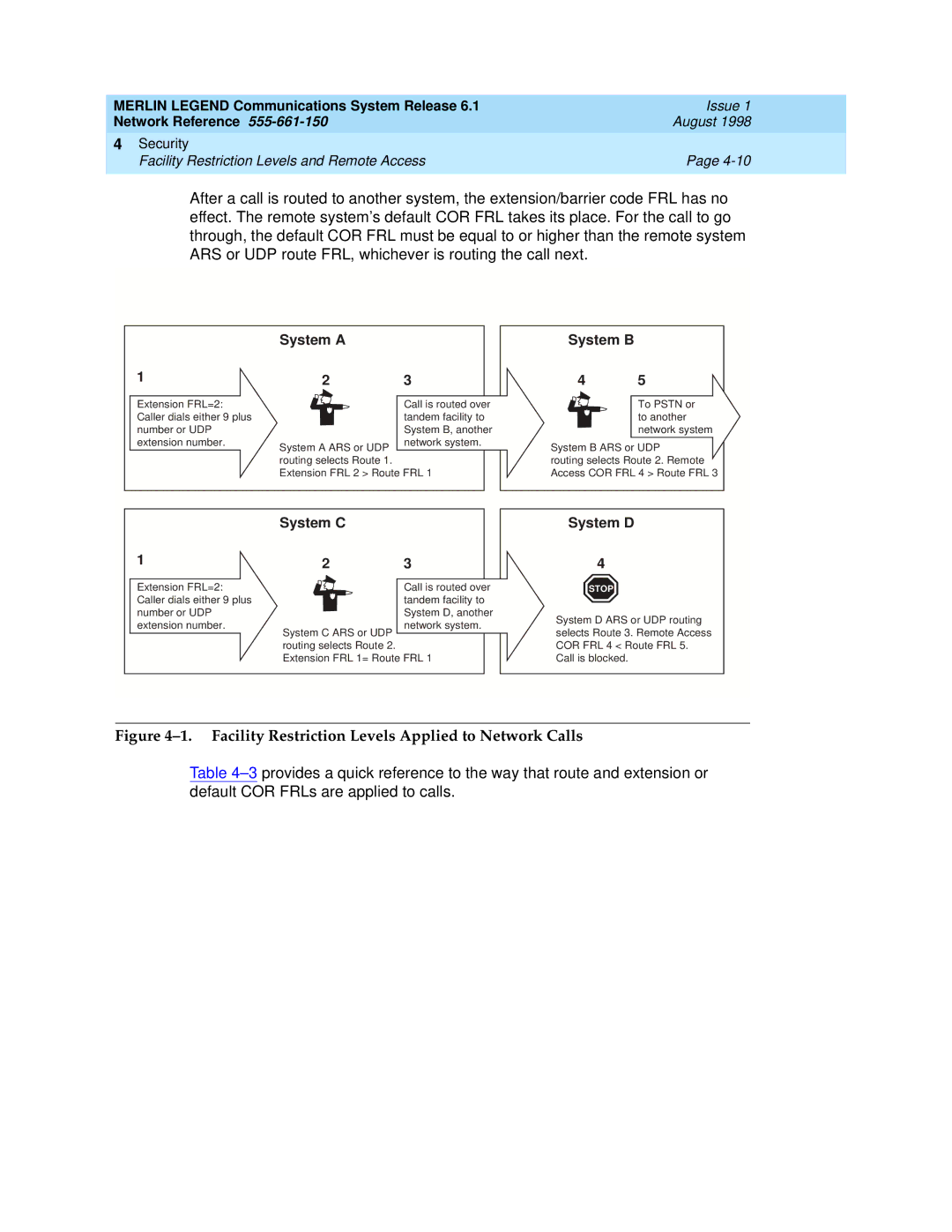
MERLIN LEGEND Communications System Release 6.1 | Issue 1 |
Network Reference | August 1998 |
4 Security |
|
Facility Restriction Levels and Remote Access | Page |
|
|
After a call is routed to another system, the extension/barrier code FRL has no effect. The remote system’s default COR FRL takes its place. For the call to go through, the default COR FRL must be equal to or higher than the remote system ARS or UDP route FRL, whichever is routing the call next.
1
System A |
|
2 | 3 |
System B |
|
4 | 5 |
Extension FRL=2: Caller dials either 9 plus number or UDP extension number.
System A ARS or UDP routing selects Route 1. Extension FRL 2 > Route
Call is routed over tandem facility to System B, another network system.
FRL 1
To PSTN or |
to another |
network system |
System B ARS or UDP |
routing selects Route 2. Remote |
Access COR FRL 4 > Route FRL 3 |
| System C |
|
1 | 2 | 3 |
| ||
Extension FRL=2: |
| Call is routed over |
Caller dials either 9 plus |
| tandem facility to |
number or UDP |
| System D, another |
extension number. | System C ARS or UDP | network system. |
|
| |
| routing selects Route 2. |
|
| Extension FRL 1= Route FRL 1 | |
System D |
4 |
STOP |
System D ARS or UDP routing |
selects Route 3. Remote Access |
COR FRL 4 < Route FRL 5. |
Call is blocked. |
|
Figure 4–1. Facility Restriction Levels Applied to Network Calls
Table
